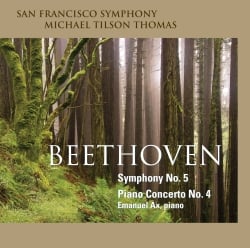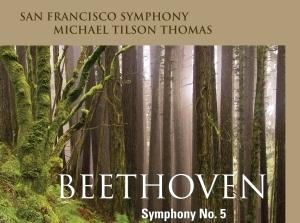
When I hear yet another Beethoven’s Fifth, I think of E.M. Forster’s comment that it is “the most sublime noise that has ever penetrated into the ear of man,” and fear whether this time it will be only noise. Fortunately, Michael Tilson Thomas and our very own San Francisco Symphony have come up with an excellent performance of the most famous symphony of them all, in combination with a superb rendition by Emanuel Ax of Ludwig Van’s Piano Concerto No. 4.
The contrast with Tilson Thomas’ approach to this music and that, say, of rival-city Music Director Gustavo Dudamel is telling — almost tortoise-and-hare–like. The Venezuelan scampers all over the place with his Venezuelan youth orchestra, goosing climaxes and the composer’s other surprises for all they’re worth. MTT plugs away at the basics with conventional tempos and phrasing — but with careful attention to detail, top-notch playing from his band members, and, most of all, a clear view toward an ultimate goal of the symphony: not the first (and famous) four notes of the first movement, but rather the three thrilling C-major chords that launch the finale.
Listen To The Music
Symphony No. 5: IV. Allegro (excerpt)Piano Concerto No. 4: III. Rondo: Vivace (excerpt)
I’ve seen the indefatigable Ax so many times, I’d begun to let his not-so-special stage presence make me think it was the same as his playing — and I couldn’t have been more wrong. His version of the fourth concerto is among the best I’ve heard. Listen to the way he comes in on the opening theme of the Vivace movement: spot on, with just the right amount of accent on the last note of the theme in the fifth bar. Beethoven put an accent on it in the score, unusual (in his day), to emphasize the third note of the scale rather than the root. But some pianists, like Rudolf Buchbinder, who was here with the Dresden Staatskapelle last October, pretend it’s not there; others overdo it.
This SACD recording is based on live performances, but no audience noise is heard other than deservedly enthusiastic shouts at the conclusions of the two works. Recording quality is excellent. Program notes are brief and in three languages. The jewel case is the sturdy super-jewel-case design. For some strange reason, the track numbers are left off the rear panel, so you have to add IV to III from the roman-numeral movement designations to get to the Rondo on Track 7.
This release is worth making some sublime noise about. Although it won’t replace any of the top contenders in this repertoire, it would make a fine gift from a loyal San Franciscan to someone starting a classical music collection.

